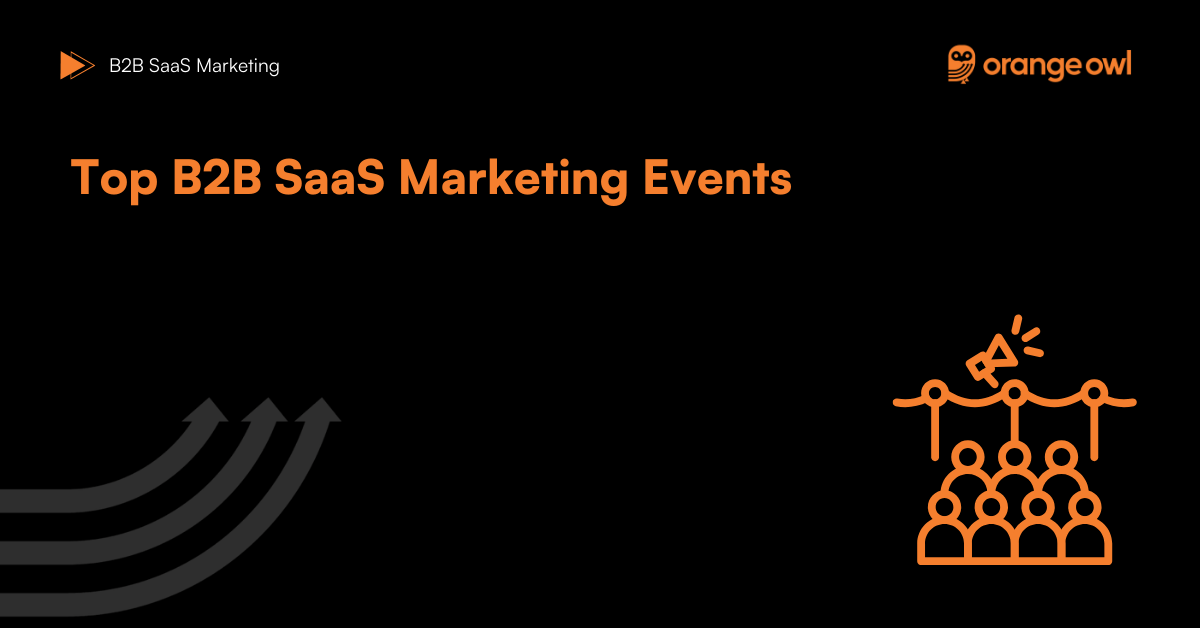Comprehensive Guide to B2B SaaS Pricing Strategies: Models, Examples, and Best Practices
Vivek Goel
August 13, 2024
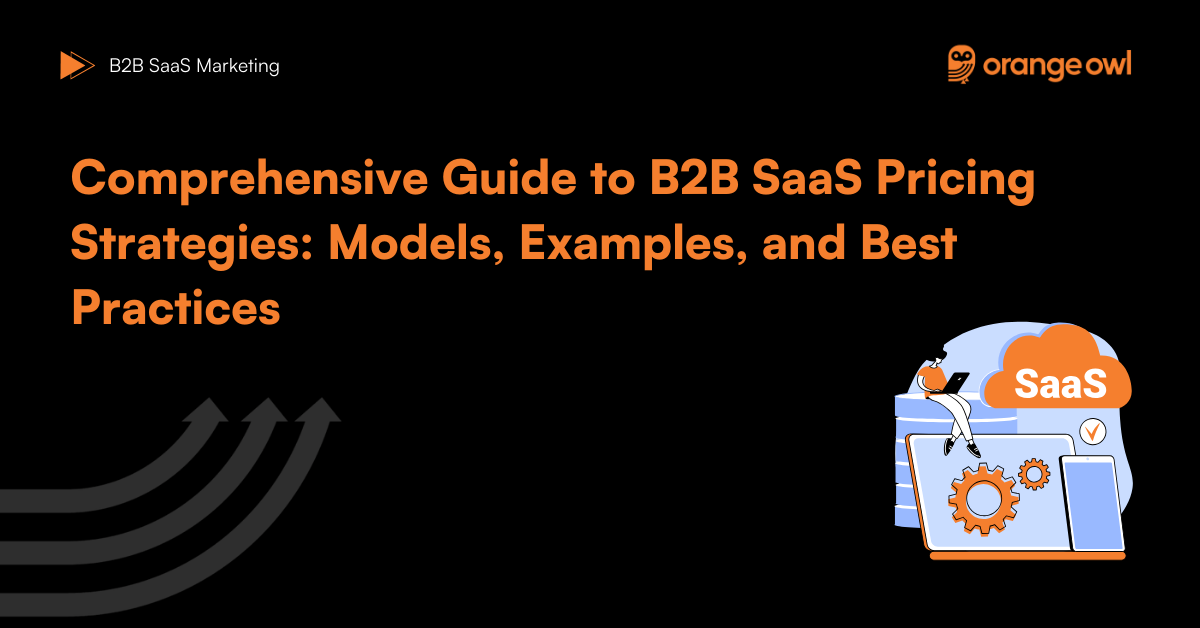
Table of Contents
What is B2B SaaS Pricing?
B2B (Business-to-Business) SaaS (Software as a Service) pricing refers to the strategy of setting prices for software solutions that businesses use as part of their operations. Unlike traditional software licensing models, SaaS typically involves subscription-based pricing where customers pay a recurring fee to access the software, often hosted in the cloud. Businesses spend an average of $7,900 per employee annually on SaaS tools, marking a 27% increase over the last two years.
Pricing in B2B SaaS is particularly nuanced due to longer sales cycles, the need for personalized solutions, and varying levels of service and feature requirements. It is crucial for SaaS companies to carefully consider how they price their products to ensure competitiveness, profitability, and alignment with customer needs.
B2B SaaS Marketing plays a key role in this ecosystem by helping companies communicate their value propositions, generate qualified leads, and drive customer loyalty. Successful B2B SaaS Marketing focuses on education, relationship-building, and demonstrating return on investment (ROI) — all of which directly influence pricing decisions and revenue growth.
Why is Choosing the Right B2B SaaS Pricing Strategy Important?
Choosing the right pricing strategy for a B2B SaaS company is essential for several reasons:
- Profitability: The pricing directly affects a company’s revenue and profit margins. It is vital to set prices that cover costs while also providing value to customers.
- Market Positioning: Pricing communicates the value and quality of the software, influencing customer perceptions and brand image. It helps establish a position in the market relative to competitors.
- Customer Acquisition and Retention: The right pricing strategy can attract new customers and retain existing ones by offering clear value and aligning with customer expectations.
- Scalability: An effective pricing model supports growth by enabling the company to expand its market reach and customer base effectively.
- Competitive Advantage: Strategic pricing can differentiate a SaaS product from competitors, offering unique value propositions that appeal to target customers.

Top B2B SaaS Pricing Strategies and Models
1. Cost-Plus Pricing
Definition:
Cost-plus pricing involves calculating the total cost of delivering the SaaS product, including development, infrastructure, and support, and adding a markup percentage to determine the selling price. This ensures all costs are covered while generating a profit.
Hypothetical Example:
A B2B SaaS company providing supply chain management software calculates the total cost of delivering their service at $200 per user per month. They apply a 30% markup to cover overhead and profit, resulting in a selling price of $260 per user per month.
Cost-Plus Pricing Examples
While cost-plus pricing is less frequently advertised in SaaS pricing pages because it’s typically used internally, companies offering custom enterprise solutions often use this model. Here are examples:
- IBM Cloud: IBM Cloud offers various cloud solutions with pricing that can be customized based on the specific needs and resources required by the enterprise. The cost-plus approach ensures that IBM’s infrastructure and service costs are covered while providing transparent pricing options for businesses.
- Oracle Cloud Infrastructure: Oracle provides tailored cloud solutions, allowing businesses to configure services according to their needs. The cost-plus model supports transparent pricing with a focus on covering costs for customized deployments.

Pros:
- Simplicity: Easy to calculate and implement, making it straightforward for many businesses.
- Cost Coverage: Ensures all costs are covered, minimizing the risk of loss.
- Predictability: Provides predictable profit margins.
Cons:
- Ignores Market Demand: Fails to consider market demand and customer willingness to pay, potentially leading to overpricing or underpricing.
- Lacks Differentiation: May not effectively communicate value, especially in competitive markets with similar products.
- Inefficiency: Encourages cost inefficiencies, as higher costs lead to higher prices without incentivizing cost control.
2. Value-Based Pricing
Definition:
Value-based pricing involves setting prices based on the perceived value of the product to the customer rather than the cost of production. This model focuses on understanding customer needs and their willingness to pay.
Hypothetical Example:
A cybersecurity SaaS provider offers an advanced threat detection platform that reduces security breaches by 50% for large enterprises. They price their solution based on the value of preventing costly data breaches, setting the price at $10,000 per month, which is justified by the savings on potential breach costs and downtime.
Value-Based Pricing Examples
Value-based pricing focuses on customer value rather than production costs. Companies that deliver substantial ROI to their customers often use this strategy:
- Salesforce: Salesforce prices its CRM solutions based on the value it provides in streamlining sales processes and enhancing customer relationship management. The pricing tiers reflect the value added through features and integrations that drive business growth.
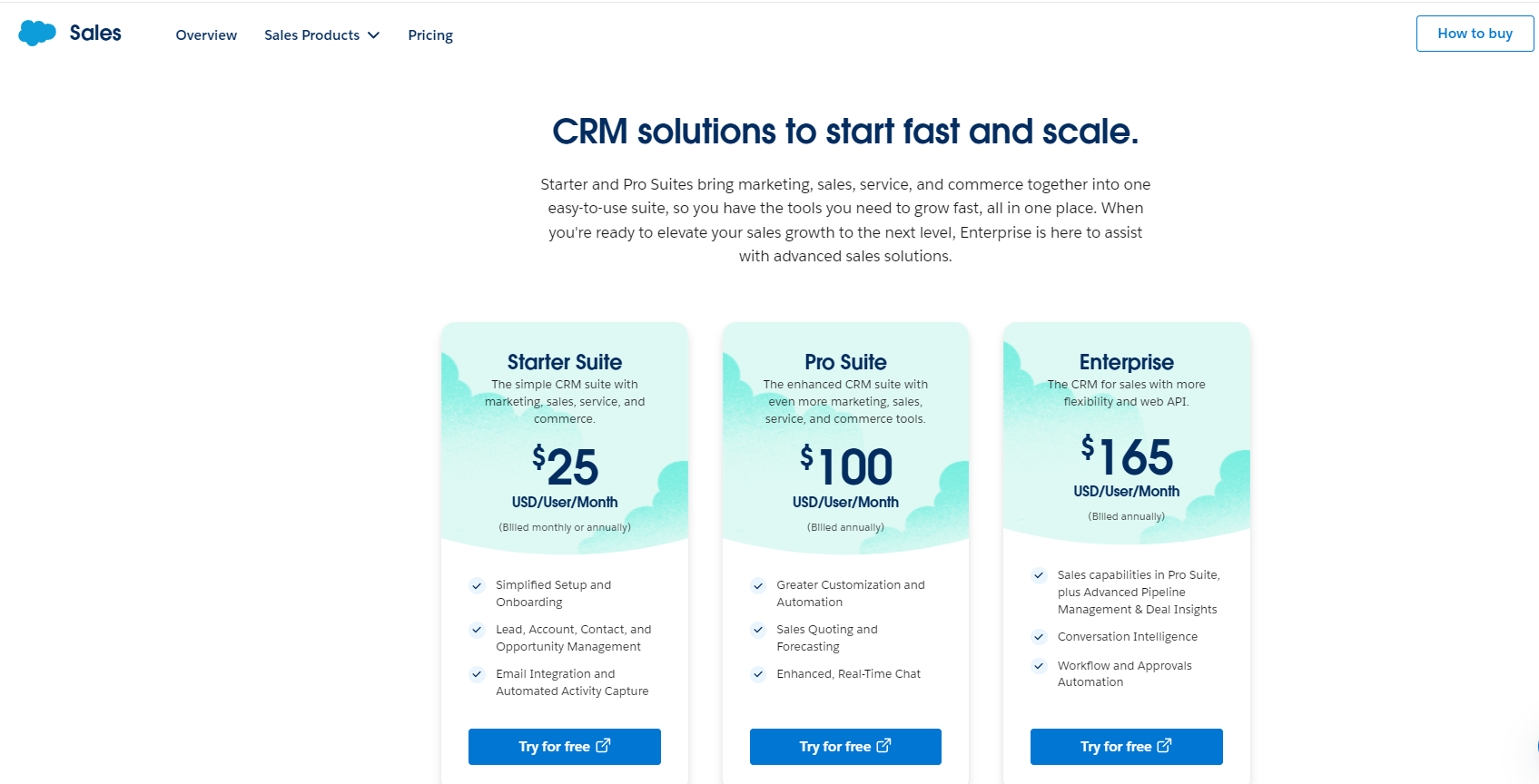
- HubSpot: HubSpot offers a value-based pricing model for its marketing, sales, and service hubs. The pricing reflects the platform’s ability to enhance customer engagement and drive business growth through its comprehensive tools and analytics.

Pros:
- Customer-Centric: Aligns with customer needs and willingness to pay, enhancing satisfaction and loyalty.
- Differentiation: Effectively communicates the unique value proposition, helping stand out in competitive markets.
- Profit Maximization: Allows capturing maximum value, leading to higher profit margins.
Cons:
- Complexity: Requires thorough market research and customer analysis to understand perceived value accurately.
- Subjectivity: Perceived value can vary among customers, making it challenging to set consistent prices.
- Resource Intensive: Demands ongoing efforts to assess and adapt to changing customer preferences and market conditions.
3. Tiered Pricing
Definition:
Tiered pricing offers multiple pricing levels with varying features or service levels. Customers can choose the tier that best meets their needs and budget.
Hypothetical Example:
A B2B SaaS company offers a marketing automation platform with three pricing tiers: Basic, Professional, and Enterprise. Each tier includes different features and support levels, allowing customers to select the package that fits their requirements.
Tiered Pricing Examples
Tiered pricing is widely used in SaaS to cater to different customer segments with varying needs:
- Slack: Slack offers tiered pricing with plans ranging from free to Business+ and Enterprise Grid. Each tier provides additional features and support levels tailored to the size and needs of the organization.
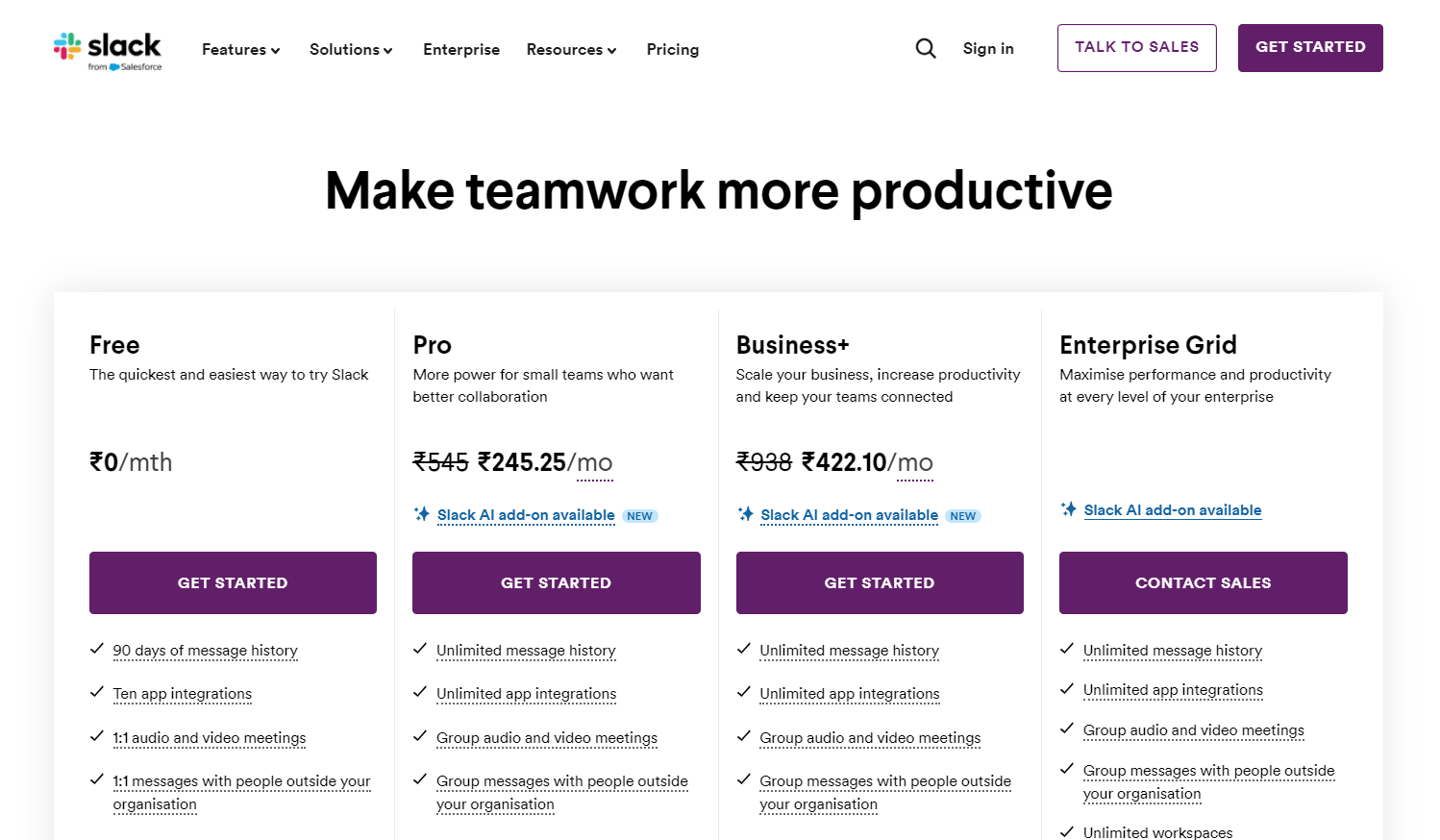
- Zendesk: Zendesk offers tiered pricing for its customer service software, with plans from Suite Team to Suite Enterprise, catering to businesses of all sizes with different support and customization needs.
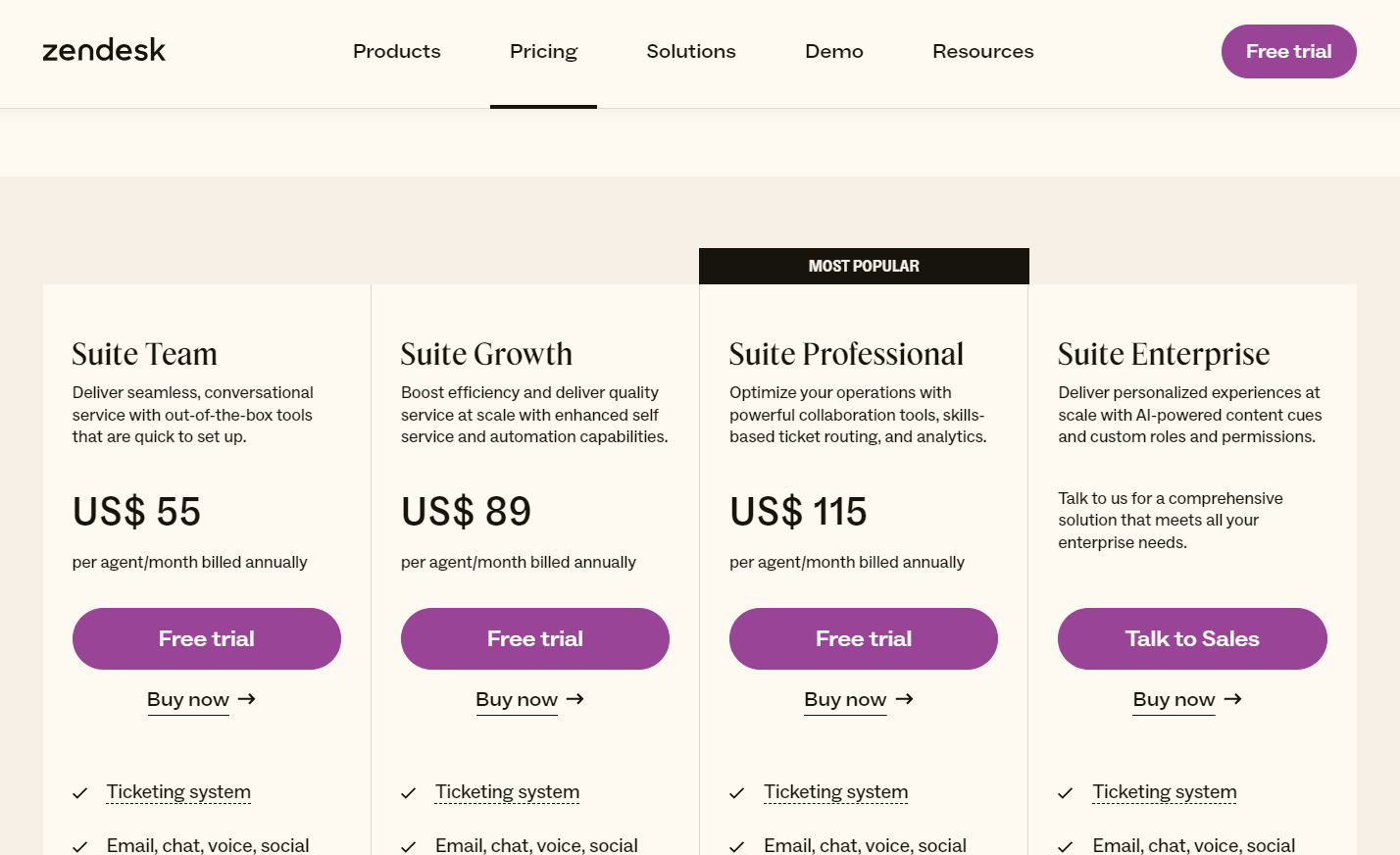
Pros:
- Flexibility: Provides options for different customer segments, catering to varying needs and budgets.
- Upselling Opportunities: Encourages customers to upgrade to higher tiers as their needs grow.
- Scalability: Supports business growth by accommodating a diverse customer base.
Cons:
- Complexity: Managing multiple pricing tiers can complicate sales, marketing, and customer support efforts.
- Customer Confusion: Too many options may overwhelm customers, leading to indecision.
- Dilution Risk: Risk of diluting brand value if lower-tier options do not meet customer expectations.
4. Usage-Based Pricing
Definition:
Usage-based pricing charges customers based on their actual usage of the product. This model aligns costs with consumption, making it suitable for businesses with variable usage patterns.
Hypothetical Example:
A cloud infrastructure provider charges businesses based on the amount of computing power and storage used. Companies pay $0.10 per GB of storage and $0.05 per computing hour, allowing them to scale resources up or down according to demand, making costs directly proportional to usage.
Usage-Based Pricing Examples
Usage-based pricing aligns costs with customer consumption, making it suitable for variable usage patterns:
- AWS (Amazon Web Services): AWS uses a pay-as-you-go model, charging customers based on the resources consumed, such as compute power and storage, making it ideal for businesses with fluctuating demand.

- Twilio: Twilio charges based on usage, such as the number of messages sent or calls made, allowing businesses to scale their communication infrastructure according to demand.
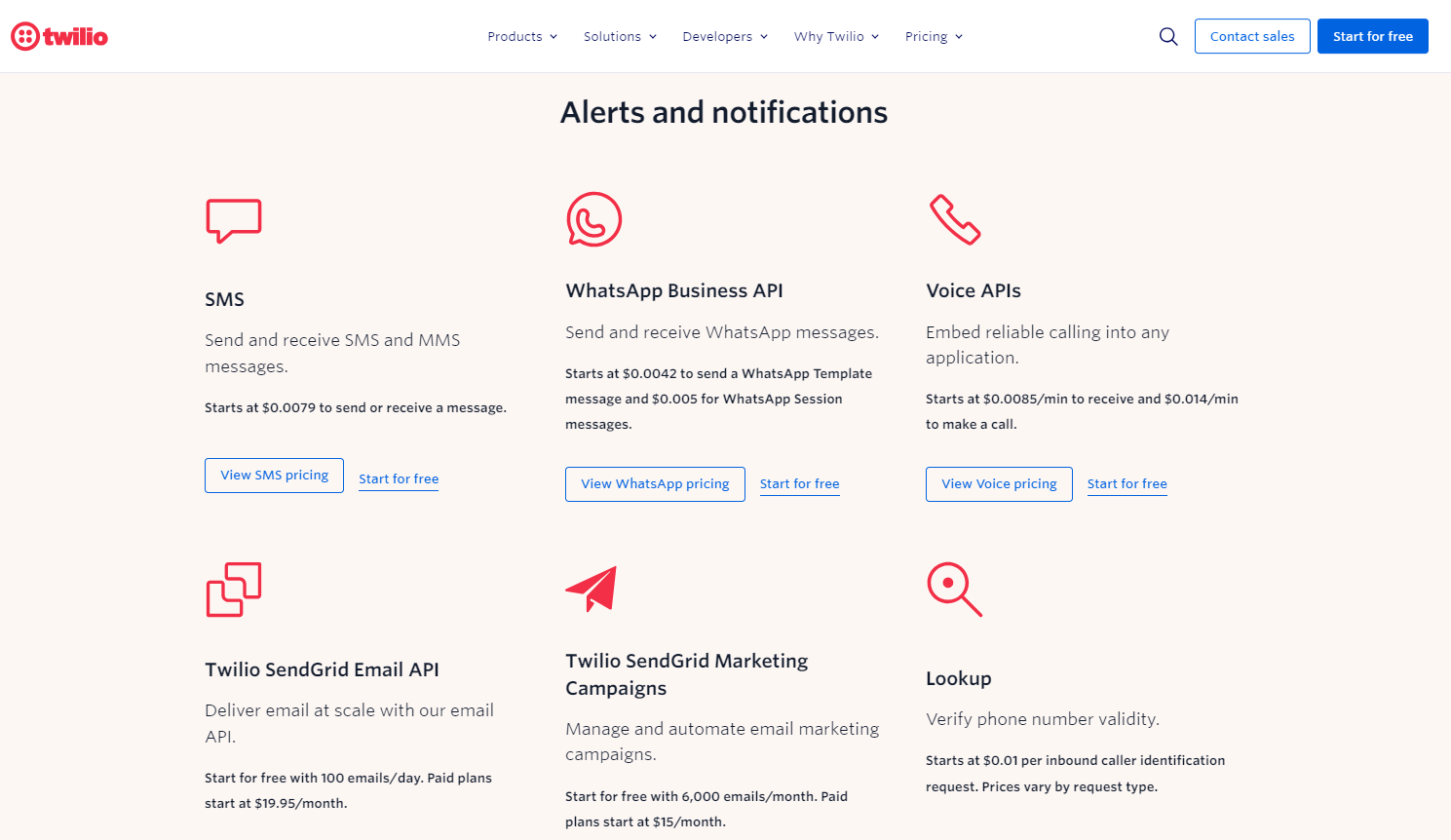
Pros:
- Alignment with Value: Customers pay for what they use, aligning costs with perceived value and reducing entry barriers.
- Scalability: Accommodates fluctuating usage patterns, supporting business growth and customer retention.
- Transparency: Provides clear pricing based on consumption, enhancing trust and satisfaction.
Cons:
- Revenue Uncertainty: Revenue may fluctuate based on customer usage, impacting financial stability.
- Complexity: Requires robust tracking and billing systems to accurately measure usage and generate invoices.
- Potential for Overuse: Customers may limit usage to control costs, impacting product adoption and engagement.
5. Freemium Model
Definition:
The freemium model offers a basic version of the product for free, with the option to upgrade to a paid version with additional features or benefits.
Hypothetical Example:
A project management SaaS platform offers a free version with basic task management and collaboration tools. Users can upgrade to a premium version at $25 per user per month to access advanced features like Gantt charts, time tracking, and integrations with other business applications.
Freemium Model Examples
Freemium models attract a large user base by offering a basic version for free, with paid upgrades:
- Trello: Trello provides a free version of its project management tool with essential features. Users can upgrade to Business Class or Enterprise plans for advanced functionalities and integrations.
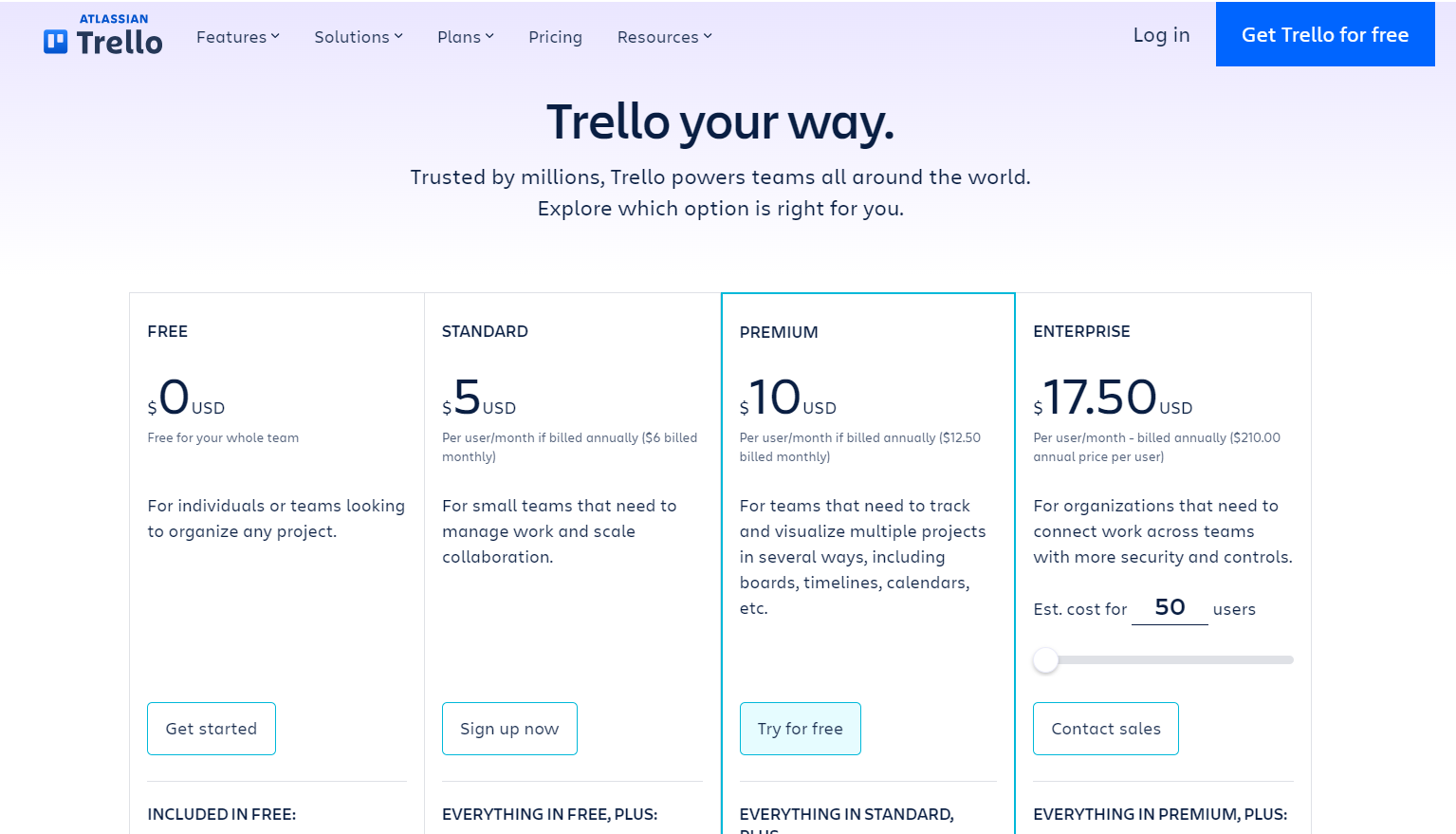
- Canva: Canva offers a free design platform with core features, allowing users to upgrade to Canva Pro for additional design elements, templates, and team collaboration tools.
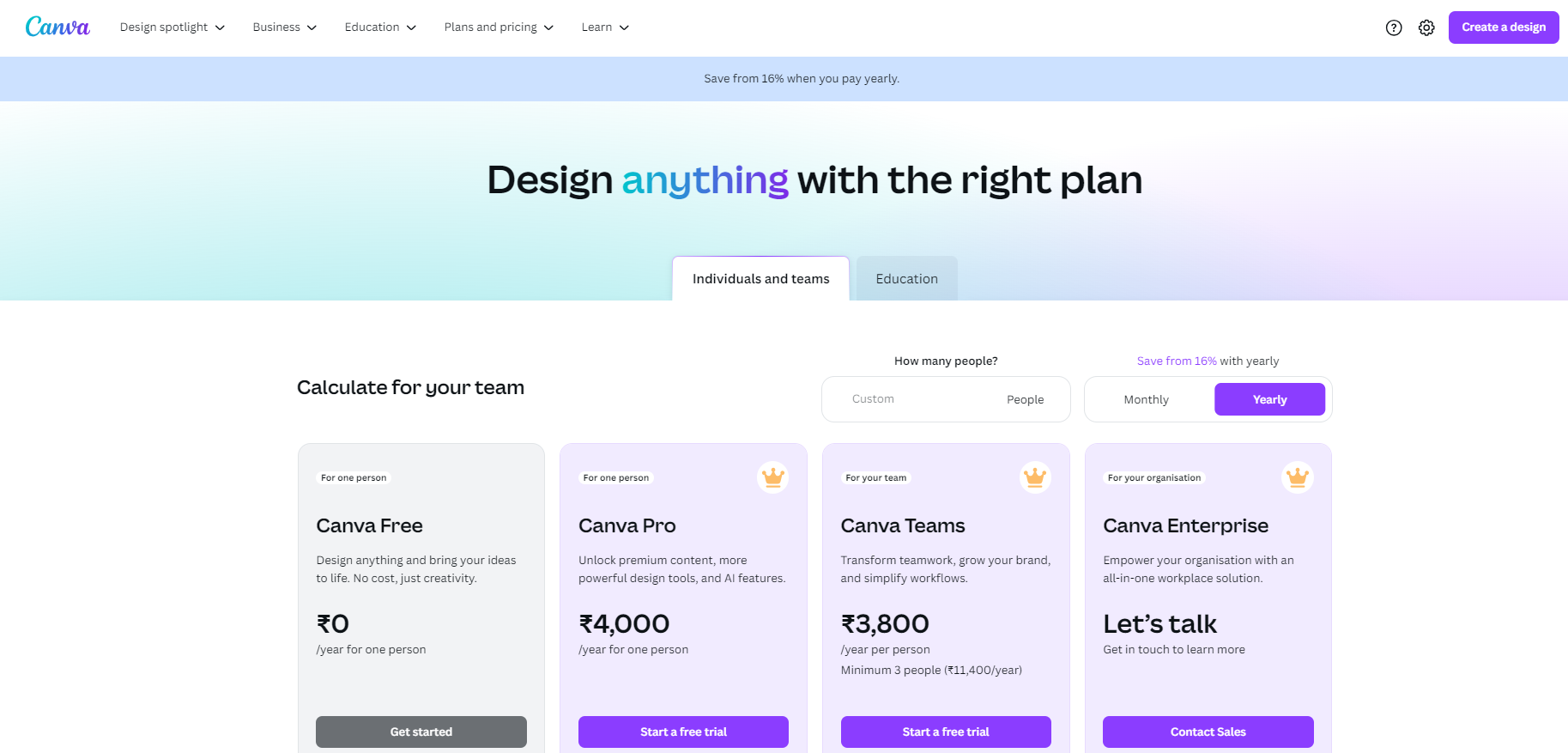
Pros:
- Low Entry Barrier: Attracts a large user base with no upfront cost, increasing brand visibility and adoption.
- Lead Generation: Provides a pool of potential customers for upselling to paid plans.
- Market Penetration: Facilitates rapid market penetration and word-of-mouth marketing.
Cons:
- Conversion Challenges: Converting free users to paying customers can be challenging, requiring compelling value propositions.
- Resource Strain: Supporting a large free user base can strain resources and infrastructure.
- Monetization Risk: Reliance on upselling may lead to revenue shortfalls if conversion rates are low.
Freemium vs. Free Trial
Freemium:
- Duration: Users can access the free version indefinitely without any time constraints.
- Access: Offers a limited set of features for free, with the option to upgrade to access premium features.
- Objective: Focuses on building a large user base and gradually converting a portion of users to paid plans over time.
Free Trial:
- Duration: Provides full access to the product for a limited period (e.g., 14 or 30 days) before requiring payment.
- Access: Users experience the complete product without restrictions during the trial period.
- Objective: Encourages users to explore the full functionality of the product and make a purchase decision before the trial expires.
Choosing Between Freemium and Free Trial:
- Product Complexity: Freemium is suitable for complex products where users benefit from extended exploration. Free trials are ideal for straightforward products that can quickly demonstrate value.
- Target Audience: Freemium attracts a broad audience, including small businesses, while free trials appeal to users ready to evaluate full functionality, often targeting larger organizations.
- Monetization Strategy: Freemium relies on large user bases and gradual conversion, whereas free trials focus on quicker conversions.
- Resource Allocation: Freemium requires investment in supporting a large free user base, while free trials focus resources on optimizing conversion pathways.
6. Dynamic Pricing
Definition:
Dynamic pricing involves adjusting prices based on real-time market demand, competition, and other factors. This model is common in industries with fluctuating demand.
Hypothetical Example:
An API management SaaS provider adjusts pricing based on API request volumes and server load. During peak business hours, prices are higher to manage demand, while off-peak usage is discounted to encourage continuous use and optimize resource allocation.
Dynamic Pricing Examples
Dynamic pricing is often used in industries with fluctuating demand, allowing for real-time price adjustments:
- AWS Spot Instances: AWS offers dynamically priced Spot Instances, where the price fluctuates based on current supply and demand, allowing customers to bid for unused cloud capacity at reduced rates.
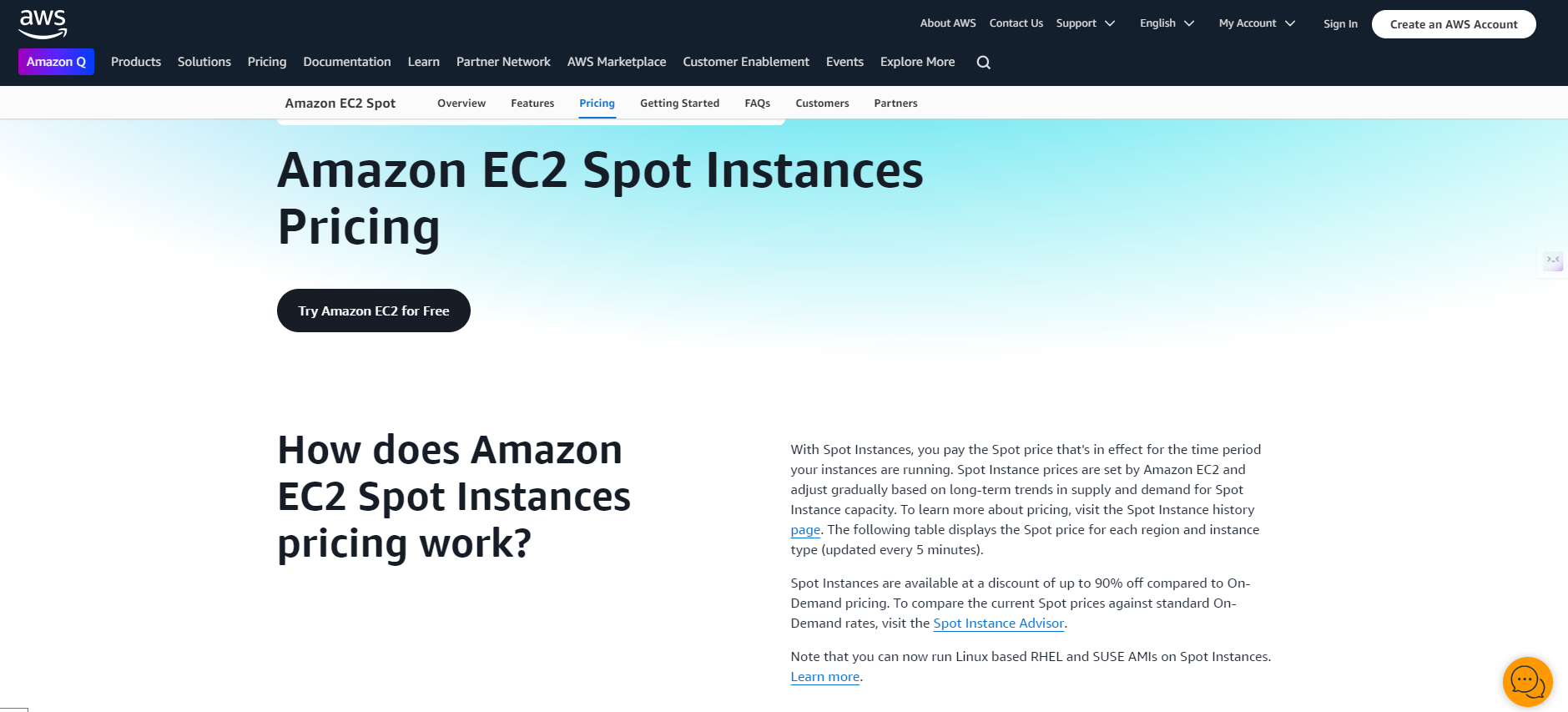
- Elastic Compute Cloud (EC2): EC2’s pricing varies based on factors like server location, instance type, and time of use, adapting to real-time demand and capacity.
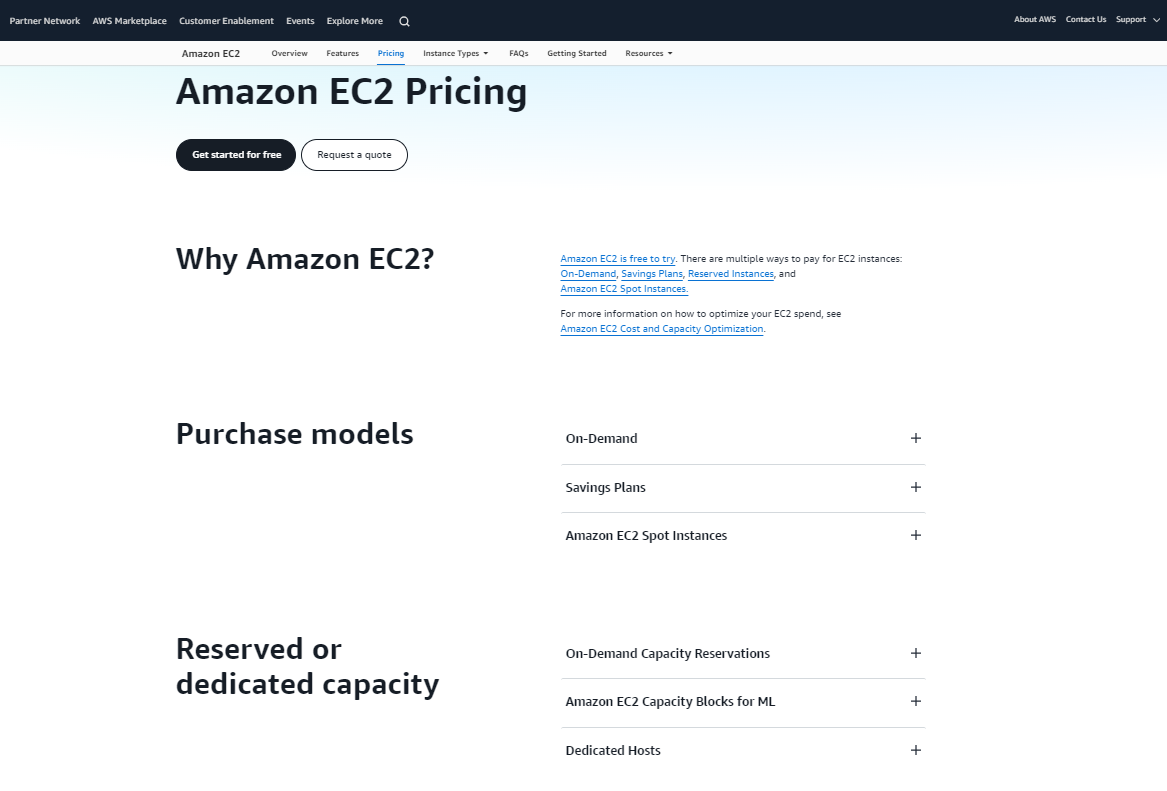
Pros:
- Revenue Optimization: Maximizes revenue by capturing demand fluctuations and market trends.
- Competitive Advantage: Responds quickly to market changes, maintaining competitiveness.
- Flexibility: Adapts pricing to reflect current market conditions, enhancing profitability.
Cons:
- Complexity: Requires sophisticated pricing algorithms and data analysis to implement effectively.
- Customer Perception: Frequent price changes may confuse or frustrate customers, impacting brand loyalty.
- Ethical Concerns: Perceived unfairness or discrimination in pricing can lead to negative publicity and customer backlash.
7. Penetration Pricing
Definition:
Penetration pricing involves setting low initial prices to enter a new market or attract customers quickly. Once the customer base is established, prices may be gradually increased.
Hypothetical Example:
A new SaaS CRM platform enters the market with an initial price of $15 per user per month, significantly lower than established competitors. This strategy attracts small and medium-sized businesses looking for cost-effective solutions, building a user base quickly. Once the platform gains traction, prices are gradually increased to $30 per user per month.
Penetration Pricing Examples
Penetration pricing involves offering low initial prices to quickly capture market share:
- Zoom: When Zoom launched, it offered competitive pricing to quickly attract users and expand its market share. This strategy helped it become a leading video conferencing platform.
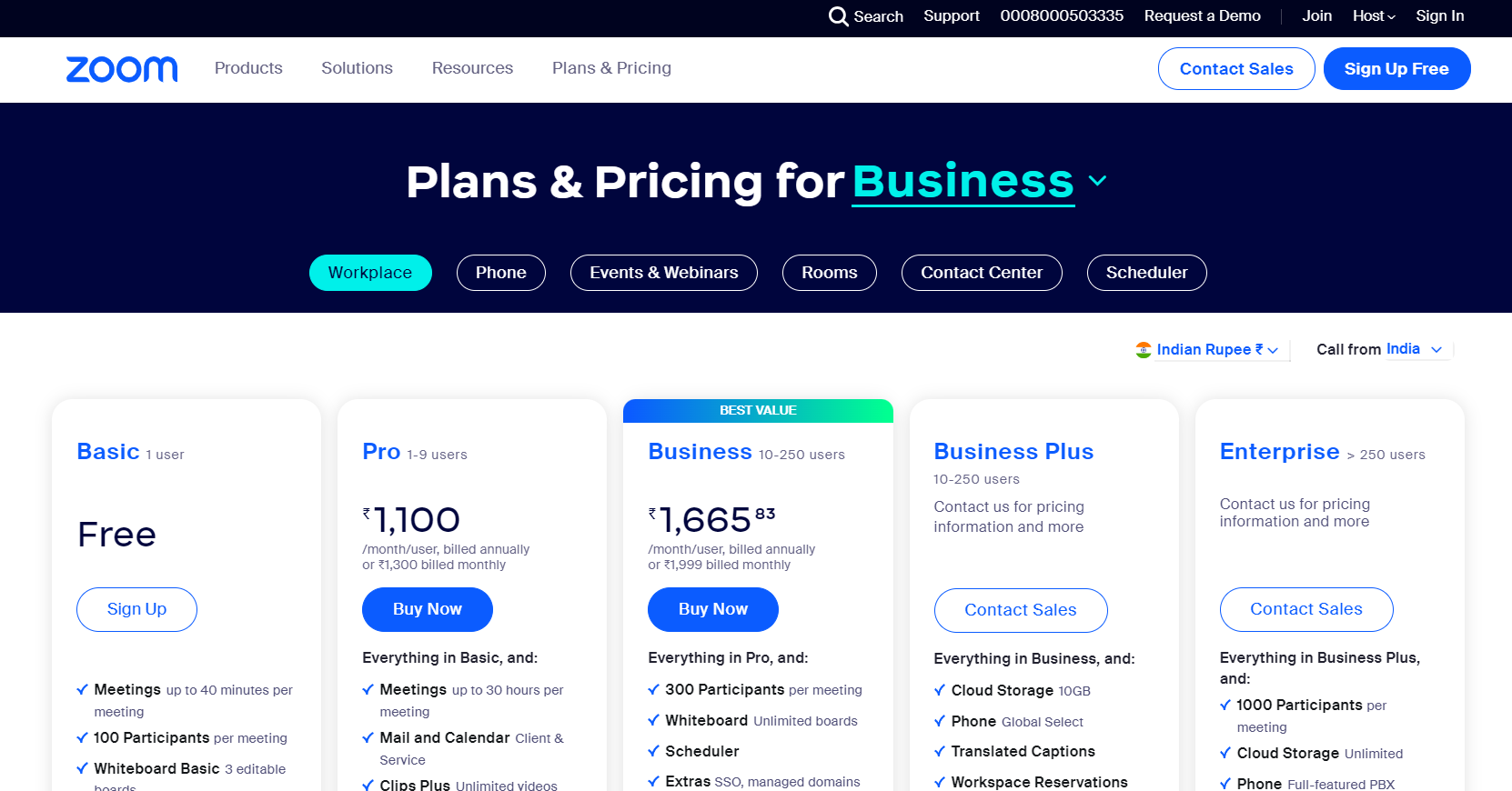
- Asana: Asana initially offered lower prices to enter the competitive project management software market, gradually increasing as its user base grew and features expanded.

Pros:
- Market Entry: Facilitates rapid market entry and customer acquisition by offering attractive prices.
- Brand Awareness: Increases brand visibility and awareness, leading to word-of-mouth referrals.
- Customer Loyalty: Builds a loyal customer base that may be willing to pay higher prices later.
Cons:
- Profit Margin Pressure: Low initial prices may result in thin profit margins, impacting financial stability.
- Price Sensitivity: Customers attracted by low prices may be price-sensitive and churn if prices increase.
- Long-Term Viability: Sustaining low prices may not be viable in the long term, requiring careful planning.
8. Premium Pricing
Definition:
Premium pricing involves setting high prices to reflect a product’s superior quality, exclusivity, or brand reputation. This model targets customers who perceive higher value in premium offerings.
Hypothetical Example:
A SaaS data analytics company offers an exclusive AI-driven insights platform priced at $2,000 per month. The platform is positioned as a premium offering with unmatched accuracy, advanced customization, and exceptional customer service, targeting enterprises that prioritize high-quality, data-driven decision-making.
Premium Pricing Examples
Premium pricing reflects a product’s superior quality, exclusivity, or brand reputation:
- Adobe Creative Cloud: Adobe positions its Creative Cloud suite as a premium offering, with pricing that reflects the comprehensive tools and capabilities provided for creative professionals.

- Tableau: Tableau’s data analytics platform is priced as a premium product, offering advanced data visualization and business intelligence tools for enterprises willing to invest in high-quality analytics.
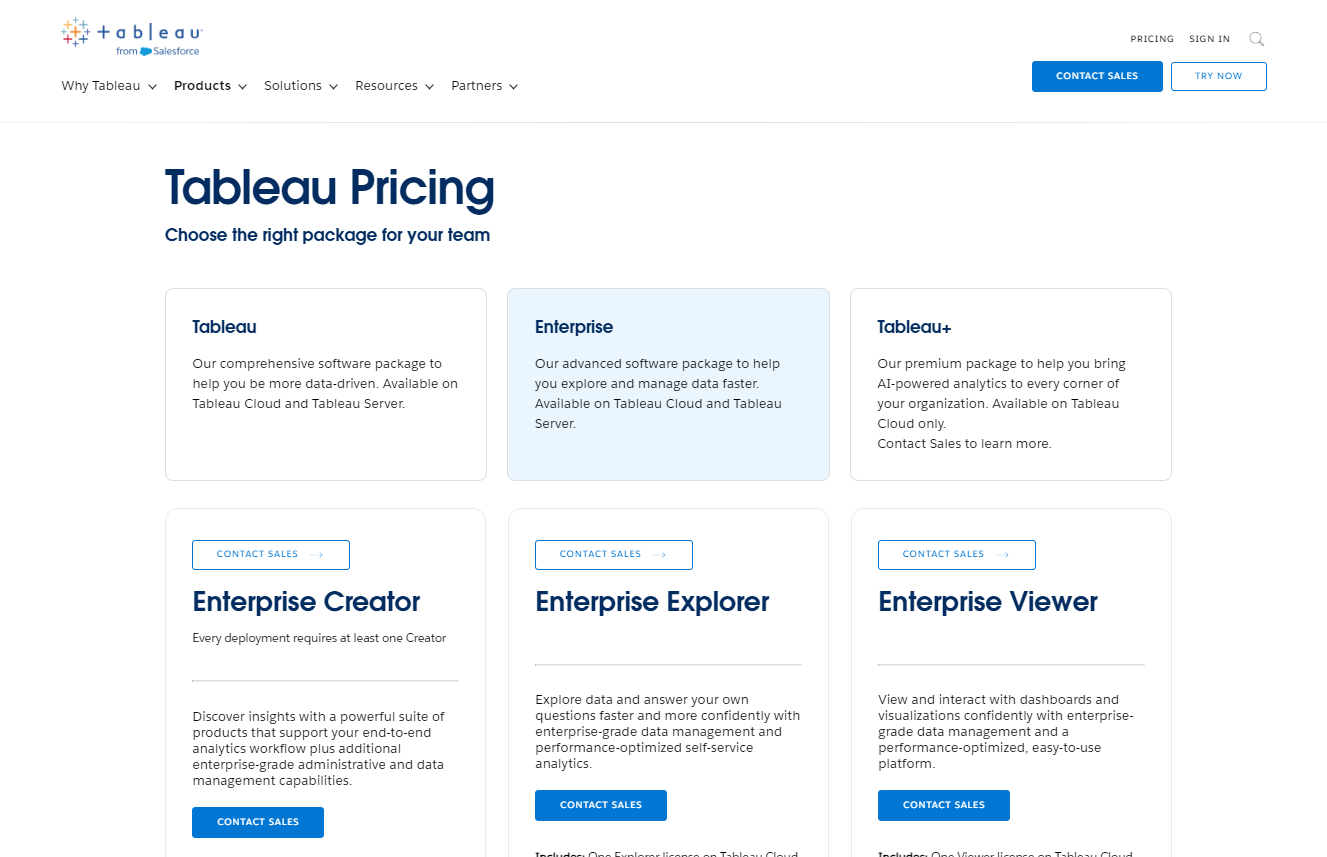
Pros:
- Brand Perception: Enhances brand perception and prestige, attracting customers seeking exclusivity.
- High Margins: Generates high profit margins due to premium pricing.
- Loyal Customer Base: Builds a loyal customer base that values quality and is less price-sensitive.
Cons:
- Limited Market: Targets a niche market segment, potentially limiting sales volume.
- Competitive Pressure: Faces competition from brands offering similar quality at lower prices.
- Economic Sensitivity: Vulnerable to economic downturns, as customers may cut back on discretionary spending.
9. Bundle Pricing
Definition:
Bundle pricing involves offering multiple products or services as a package at a discounted rate compared to purchasing each item individually. This model encourages customers to purchase more and increases perceived value.
Hypothetical Example:
A SaaS provider offers a business productivity suite that includes document management, communication tools, and project collaboration software. Individually, the products cost $30, $20, and $50 per user per month, respectively, but as a bundled package, they are offered at $85 per user per month, providing a discount and encouraging adoption of the entire suite.
Bundle Pricing Examples
Bundle pricing offers multiple products or services together at a discounted rate:
- Microsoft 365: Microsoft 365 bundles productivity tools like Word, Excel, and Teams at a discounted rate compared to purchasing each separately, providing comprehensive business solutions.
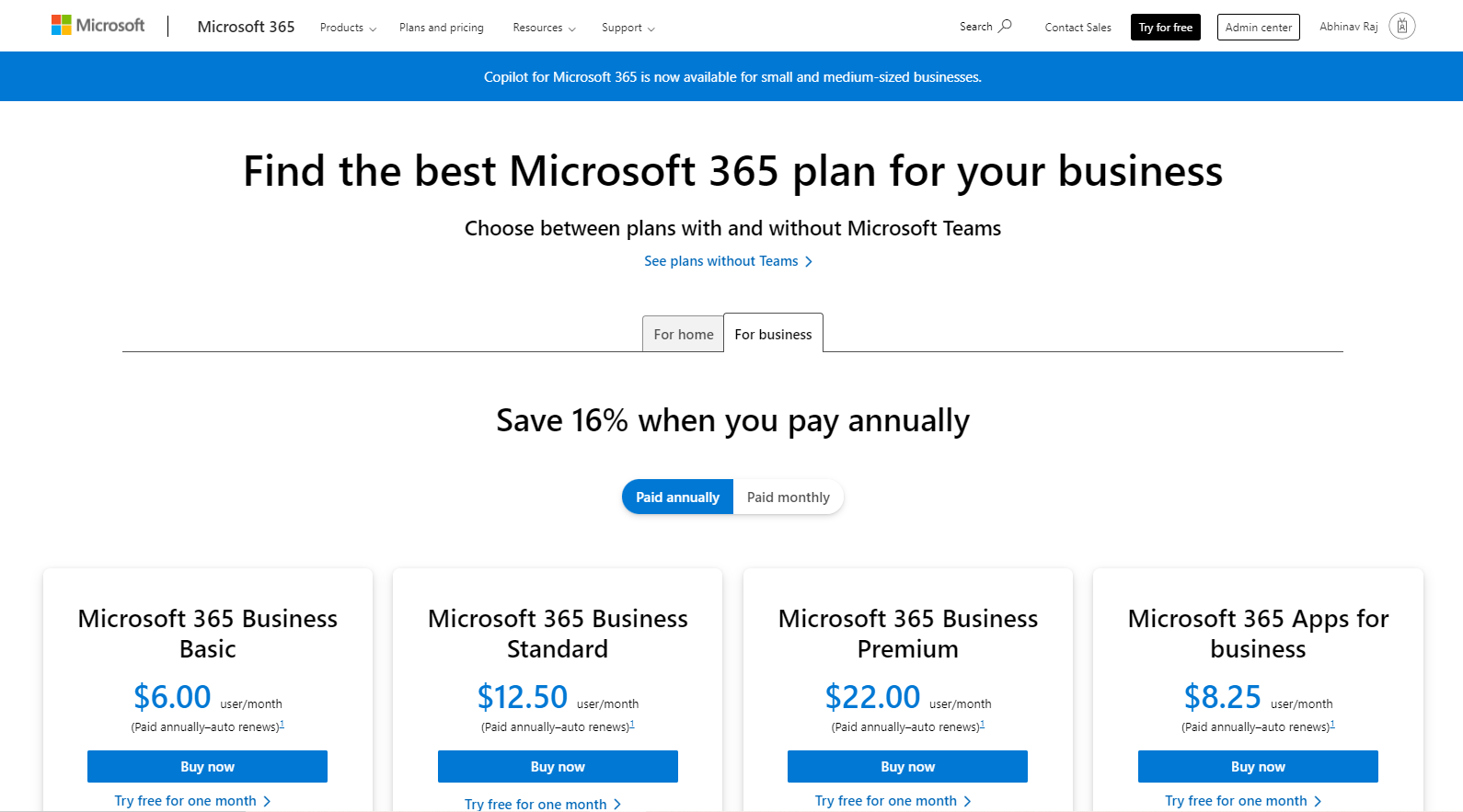
- Google Workspace: Google Workspace bundles Gmail, Drive, Docs, and other productivity tools into a single package, offering a discounted rate for integrated business communication and collaboration solutions.
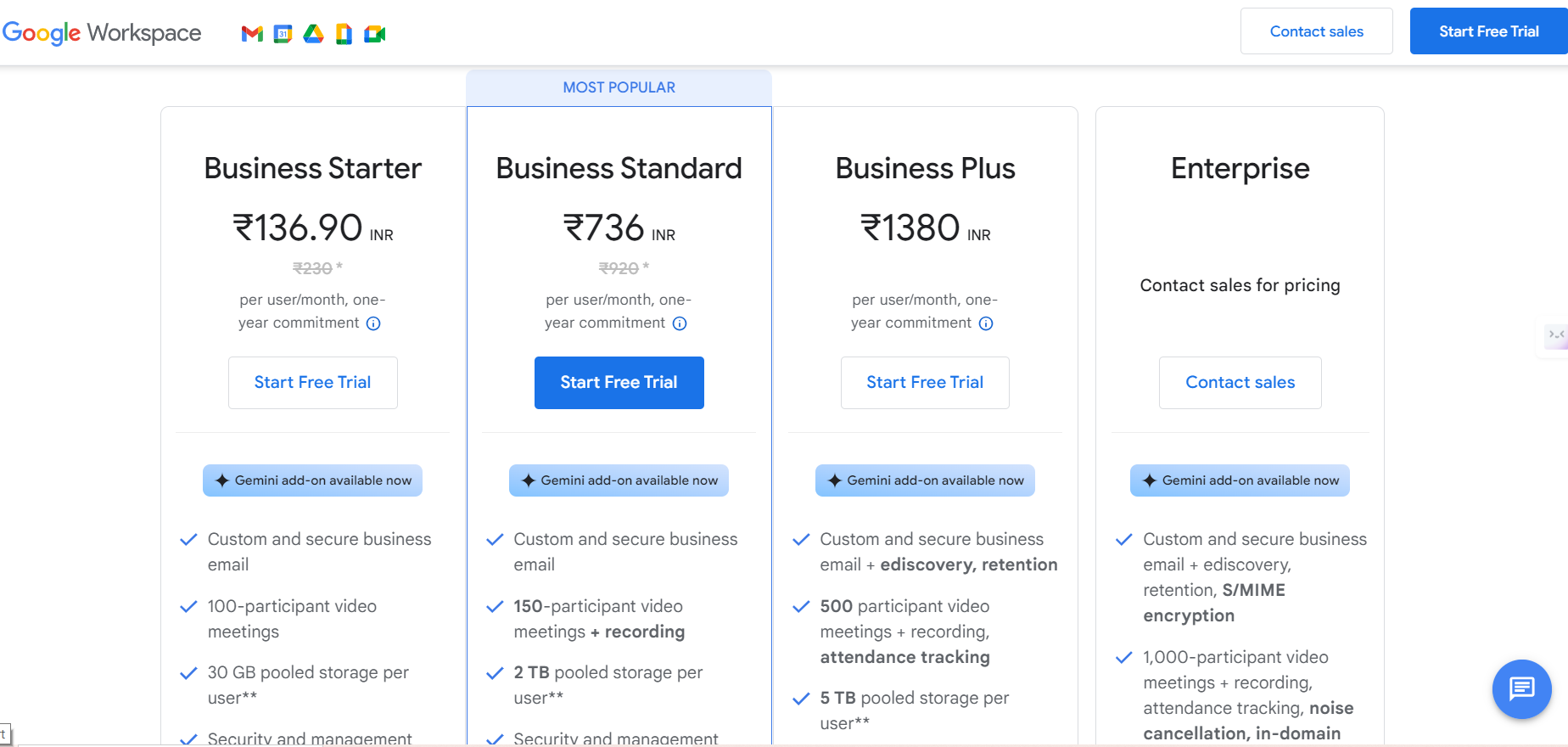
Pros:
- Increased Sales: Encourages customers to purchase additional products or services, boosting sales volume.
- Perceived Value: Enhances perceived value and convenience, attracting cost-conscious customers.
- Cross-Selling Opportunities: Facilitates cross-selling by introducing customers to complementary products.
Cons:
- Profit Margin Impact: Discounted bundle pricing may reduce profit margins.
- Complexity: Managing and marketing bundles can be complex, requiring coordination across product lines.
- Customer Perception: Customers may perceive bundles as offering unnecessary products or services.
How to Choose the Right B2B SaaS Pricing Strategy?
Choosing the right pricing strategy involves a careful analysis of various factors unique to your business and market environment. Here are key considerations to guide your decision:
- Understand Customer Needs: Conduct thorough market research to understand your target customers’ needs, preferences, and willingness to pay. Consider factors such as their budget constraints, perceived value, and buying behavior.
- Analyze Competition: Study competitors’ pricing strategies to identify industry norms and potential gaps in the market. Determine how your pricing can differentiate your product and offer a unique value proposition.
- Align with Business Goals: Ensure your pricing strategy aligns with your company’s overall business objectives, such as revenue growth, market expansion, or brand positioning. Consider how pricing will impact long-term goals and scalability.
- Assess Cost Structure: Evaluate your cost structure, including production, distribution, and marketing expenses, to ensure that your pricing covers costs and generates desired profit margins.
- Consider Market Conditions: Take into account market conditions, such as economic trends, industry growth, and regulatory factors, that may influence pricing decisions.
- Test and Iterate: Implement pricing experiments and A/B tests to assess the impact of different pricing models on customer behavior and revenue. Use data-driven insights to refine and optimize your pricing strategy over time.
Common Pitfalls and Mistakes in Choosing B2B SaaS Pricing Strategies
When selecting a pricing strategy, businesses must be aware of common pitfalls and mistakes that can undermine their efforts:
- Overlooking Customer Value: Focusing solely on costs or competitor pricing without considering customer value can lead to misaligned pricing and missed opportunities.
- Ignoring Market Dynamics: Failing to adapt to changing market conditions and customer preferences can render pricing strategies ineffective.
- Inflexibility: Sticking rigidly to a pricing model without room for adjustments can hinder responsiveness to market shifts and customer feedback.
- Complex Pricing Structures: Overly complex pricing structures can confuse customers and deter purchases. Simplicity and transparency are key to effective pricing.
- Neglecting Communication: Inadequate communication of pricing changes or value propositions can lead to customer dissatisfaction and churn.
- Underestimating Competitors: Ignoring competitors’ pricing strategies and market positioning can result in missed opportunities for differentiation.
How to Know if Your B2B SaaS Pricing Strategy is Working
To determine the effectiveness of your pricing strategy, monitor key performance indicators (KPIs) and gather feedback from customers and sales teams. Here are some metrics to consider:
- Revenue Growth: Track revenue growth over time to assess the impact of pricing on sales performance. Analyze trends to identify patterns and opportunities.
- Customer Acquisition and Retention: Monitor customer acquisition rates and retention rates to evaluate the attractiveness and stickiness of your pricing.
- Profit Margins: Measure profit margins to ensure pricing covers costs and generates desired profitability. Identify areas for cost optimization and efficiency.
- Competitive Positioning: Assess your market position relative to competitors and determine if pricing supports differentiation and competitive advantage.
- Customer Feedback: Gather feedback from customers to understand their perceptions of pricing and value. Use surveys, interviews, and support interactions to gain insights.
- Sales Team Feedback: Engage with sales teams to gather insights on customer objections, pricing challenges, and opportunities for improvement.
How to Optimize and Adjust B2B SaaS Pricing Strategies
Optimizing and adjusting pricing strategies involves ongoing analysis and adaptation to market dynamics and customer feedback. Here are steps to optimize pricing:
- Conduct Regular Reviews: Periodically review pricing performance and make adjustments based on data-driven insights. Stay informed about market trends and customer behavior.
- Experiment with Pricing Models: Test different pricing models and approaches to determine what resonates best with your target audience. Use experiments to validate hypotheses and refine strategies.
- Segment Customers: Tailor pricing strategies to different customer segments based on their needs, preferences, and willingness to pay. Offer personalized pricing and packages to enhance value.
- Leverage Technology: Use pricing software and analytics tools to gain real-time insights into pricing performance and customer behavior. Automate pricing updates and optimization.
- Communicate Changes: Clearly communicate pricing changes and the rationale behind them to customers. Highlight the value and benefits of new pricing structures.
- Monitor Competitors: Continuously monitor competitors’ pricing strategies and market positioning to identify opportunities and threats. Stay agile and responsive to competitive dynamics.
By understanding and implementing the right pricing strategies, B2B SaaS companies can effectively maximize revenue, differentiate their products, and build strong customer relationships. This comprehensive guide provides valuable insights into various pricing models, helping businesses make informed decisions and drive success in competitive markets.
Frequently Asked Questions (FAQs) on B2B SaaS Marketing Strategies
When setting the initial price for a B2B SaaS product, consider factors such as market demand, customer value perception, competitor pricing, production and operational costs, and target market segment. It’s essential to balance covering costs with competitive positioning to attract early adopters. Conducting market research and customer surveys can provide insights into pricing expectations and willingness to pay.
When planning a price increase, communicate transparently with customers well in advance. Explain the reasons for the change, such as added value, improved features, or increased costs. Offer to grandfather existing customers at current rates for a specified period or provide loyalty discounts to ease the transition. Clear communication helps maintain trust and customer satisfaction.
Psychological pricing can significantly impact customer perception and purchasing decisions. Techniques such as setting prices ending in .99, offering decoy pricing options, or using anchor pricing to highlight value can influence how customers perceive price and value. These tactics can make prices seem more attractive and encourage higher conversion rates.
Pricing experiments, such as A/B testing and market segmentation trials, help identify optimal pricing by testing different models and price points. These experiments provide data on customer behavior, conversion rates, and revenue impacts. Continuous testing allows SaaS companies to refine pricing strategies based on real-world performance and customer feedback.
To address pricing objections, sales teams should focus on demonstrating the product’s value and ROI, understanding the customer’s specific needs and challenges, and offering flexible pricing or payment terms. Providing case studies and testimonials can also help reassure potential customers of the product’s worth. Training sales teams on objection-handling techniques can improve conversion rates.
Discounts and promotions can incentivize new customer acquisition, encourage upgrades, and boost short-term sales. They create urgency and can help penetrate new markets or segments. However, frequent discounts can devalue the product and impact long-term pricing integrity. It’s crucial to balance promotional tactics with maintaining perceived value.
Pricing communicates the value and quality of a product, influencing customer perceptions and brand positioning. Premium pricing can elevate a brand’s status, while lower pricing can make a product more accessible but may suggest lower quality. Aligning pricing with brand messaging ensures consistency in how the product is perceived in the market.
SaaS companies can differentiate through unique pricing models, such as performance-based pricing or flexible subscription plans. Offering custom pricing tailored to specific industries or business sizes can also create differentiation. Highlighting unique features or bundled services in pricing can further distinguish a product from competitors.
Transparent pricing builds trust by providing clear, upfront information about costs and fees. Customers appreciate knowing what they will pay without hidden charges. Transparent pricing fosters trust and long-term relationships, leading to higher customer satisfaction and retention rates. It’s essential to communicate pricing changes and structures openly.
For international markets, consider factors such as local purchasing power, currency exchange rates, and cultural pricing preferences. Adjust pricing to reflect regional economic conditions and competitive landscapes. Offering localized pricing, accepting multiple currencies, and understanding local regulations are key strategies for successful international pricing. Conducting market research and gathering local insights can further enhance pricing strategies in diverse markets.
These FAQs provide additional insights into the complexities of pricing strategies in the B2B SaaS industry, helping companies navigate challenges and optimize their approach.


